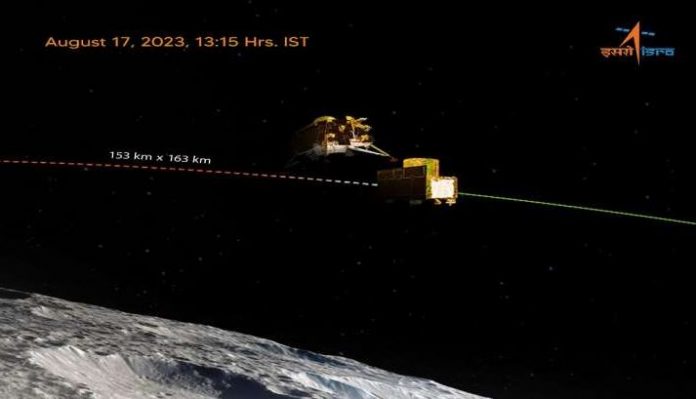India’s Chandrayaan-3 mission marked another giant leap in its lunar quest as the ‘Vikram’ lander module of the spacecraft successfully separated from the propulsion module on Thursday.
The Chandrayaan-3 mission’s lander is named after Vikram Sarabhai (1919–1971), who is widely regarded as the father of the Indian space programme.
On Wednesday, the spacecraft carried out the final lunar-bound orbit reduction manoeuvre of the Chandrayaan-3 spacecraft, a week ahead of its scheduled landing on the south pole of the moon on August 23.
A GSLV Mark 3 (LVM 3) heavy-lift launch vehicle was used for the launch of the spacecraft that was placed in the lunar orbit on August 5 and since then it has been through a series of orbital manoeuvres been lowered closer to the moon’s surface.
It has been a month and two days since the Indian Space Research Organisation launched the Chandrayaan-3 mission on July 14. The spacecraft was launched from the Satish Dhawan Space Centre in Andhra Pradesh’s Sriharikota.
ISRO is bidding to make a successful soft landing on the moon, which will make India the fourth country in the world to achieve the feat after the United States, Russia and China.
Chandrayaan-3 components include various electronic and mechanical subsystems intended to ensure a safe and soft landing such as navigation sensors, propulsion systems, guidance and control, among others.
The stated objectives of Chandrayaan-3, India’s third lunar mission, are safe and soft landing, rover roving on the moon’s surface, and in-situ scientific experiments.
The approved cost of Chandrayaan-3 is Rs 250 crores (excluding launch vehicle cost).





